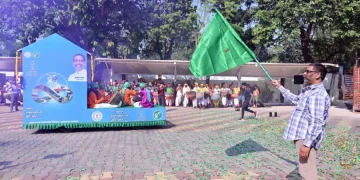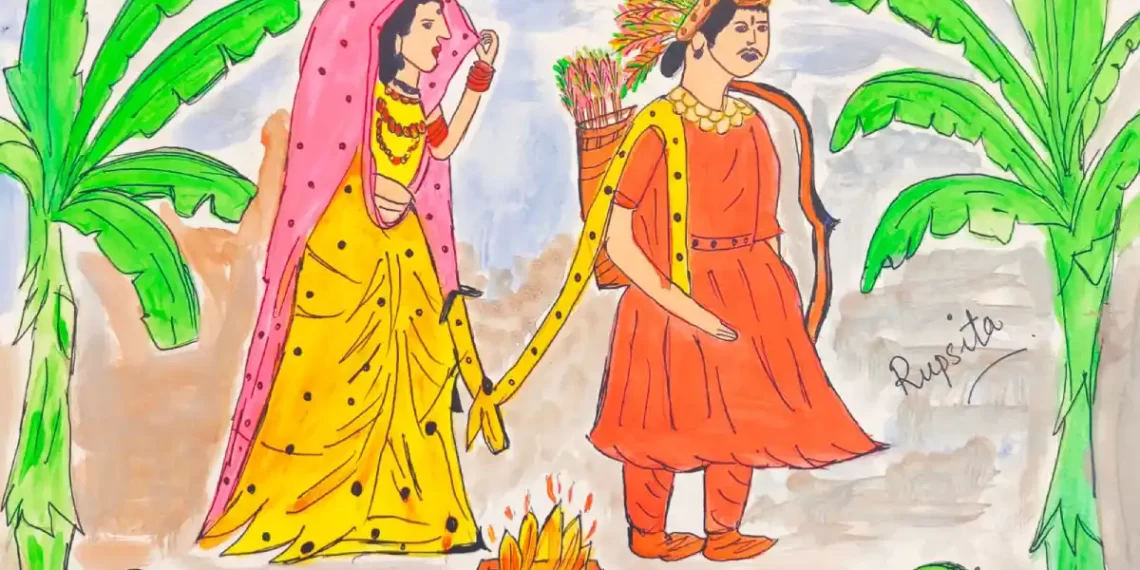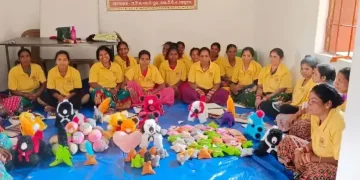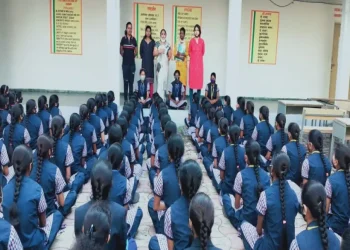Bhubaneswar
Marriages, or Sendham Sedi, are a two-day affair among the Kondh tribals of Kandhamal, Odisha. One day the tribal marriage is for ceremonies for the bride’s family and the other for the groom’s side.
The groom gets ready for the momentous occasion by carrying a set of Ahapaka Bahapaka (bow and arrow), a Chhati or decorative umbrella and wearing a Kadga. This is a sort of turban with horns.
He starts his procession to the bride’s house with friends and relatives to the beat of traditional drums, Tamki, Singa and flutes. Upon their arrival on the outskirts of the village, the Dhangada (young unmarried boys) of the bride’s village carry the bridegroom on their shoulders to the location of the ceremony.
The bride wears the Kashta sari, a nosepin, embellishments on her ears, bracelets and a necklace for her wedding. She is adorned with flowers and wears the all-important Taperi on her head.
“In this tribal marriage, the Taperi is the main ornament of the bride and the singh (horns) for the groom. Both are made of silver,” says Akhaya Kumar Karna, president of Zilla Paramparik Lok Kalakar Sangha and vice-president of Zilla Kala Sanskruti Sangha.
Others accompanying the duo also carry their traditional weapons, singing and dancing to tribal musical instruments.
After the marriage ceremony, the girl is carried by her husband, accompanied by family, friends and community members, to his house amid much fanfare.
The new couple take a round of the village, after which there is again a big feast marking the tribal marriage.























